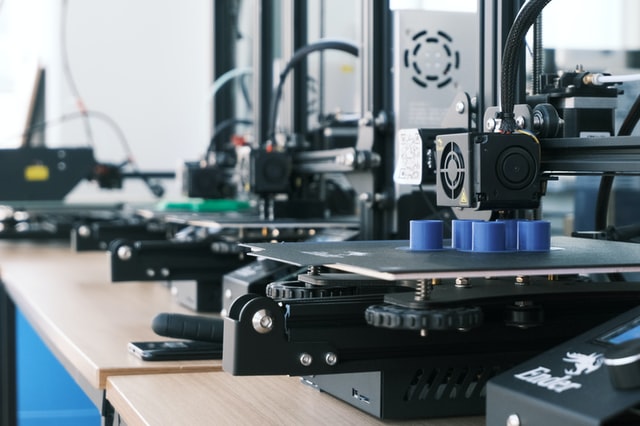In recent years, 3D printing has become increasingly popular and accessible to the general public. This technology has not only revolutionized the manufacturing industry but has also created new opportunities for communities. In this blog post, we will explore the benefits and progress within a community using 3D printing.
Democratizing Manufacturing
3D printing has democratized manufacturing by allowing individuals to create their own products without the need for expensive machinery or specialized skills. With 3D printing, anyone with a computer and a 3D printer can create customized products. This has led to the rise of the maker movement, which promotes creativity, innovation, and entrepreneurship. The maker movement has also created new job opportunities for people with skills in design, engineering, and manufacturing.
Community Benefits of 3D Printing
There are several benefits of using 3D printing in a community setting. One of the most significant benefits is that it allows for the creation of custom products tailored to the needs of the community. For example, 3D printing can be used to create prosthetic limbs for individuals who may not have access to traditional prosthetics due to financial or geographic limitations.
Additionally, 3D printing can be used to create replacement parts for broken or obsolete machinery. This can be particularly useful in rural or remote areas where access to replacement parts may be limited. 3D printing can also be used to create educational tools and toys for children, promoting creativity and innovation in the next generation.
Progress within a Community
Many communities have already begun to use 3D printing to create products and services tailored to their needs. For example, a community in Mexico used 3D printing to create affordable housing for families living in poverty. The houses were created using a large 3D printer that could produce the walls and roof of a house in just 24 hours. The project not only provided affordable housing but also created new job opportunities for people with skills in design and construction.
Another example of 3D printing being used for community progress is the creation of assistive devices for people with disabilities. Organizations like e-NABLE use 3D printing to create customized prosthetic limbs and other assistive devices for individuals who may not have access to traditional healthcare services. These devices can significantly improve the quality of life for individuals with disabilities and promote greater independence and inclusion within the community.
Conclusion
In conclusion, incorporating the use of recycled plastic as a resource for 3D printing can provide many benefits to a community. By re-purposing plastic waste, it reduces environmental harm, reduces costs, and promotes a circular economy. As technology and awareness continue to advance, we can expect to see more progress towards sustainable and environmentally conscious 3D printing practices. This technology has already been used to create affordable housing, assistive devices, replacement parts, and educational tools. As 3D printing technology continues to advance, we can expect to see even more progress within communities, creating of local jobs and helping to ensure a more stable community.
With the increasing concern for the environment and the need for sustainable practices, recycling plastic waste has become a pressing issue. Fortunately, 3D printing has the potential to make a significant contribution to this effort.
Recycling plastics for 3D printing involves the shredding, melting down the plastic and converting it into a filament that can be used in a 3D printer. This filament can then be used to create new products and prototypes, reducing waste and promoting a circular economy.
One of the key benefits of using recycled plastic in 3D printing is that it’s cost-effective. Recycled plastic is generally cheaper than new plastic, which can make 3D printing more accessible to individuals and communities who may not have the resources to purchase new materials.
In addition to being cost-effective, using recycled plastic in 3D printing can also reduce the environmental impact of plastic waste. By re-purposing plastic waste, it helps to prevent it from ending up in landfills or the ocean, where it can harm wildlife and the environment.
Several companies and organizations are already exploring the use of recycled plastic in 3D printing. For example, the organization Precious Plastic has created an open-source platform that allows individuals and communities to recycle plastic waste into 3D printing filaments.
Furthermore, companies like Full Circle Plastics. have developed 3D printing technology that enables them to create furniture and urban infrastructure from recycled plastic.
In conclusion, incorporating the use of recycled plastic as a resource for 3D printing can provide many benefits to a community. By re-purposing plastic waste, it reduces environmental harm, reduces costs, and promotes a circular economy. As technology and awareness continue to advance, we can expect to see more progress towards sustainable and environmentally conscious 3D printing practices.
Here are some references to support the information in the article:
- Using 3D Printing to Create Affordable Housing: https://www.fastcompany.com/90534917/these-cute-backyard-houses-are-entirely-3d-printed?partner=rss
- e-NABLE: http://enablingthefuture.org/
- Precious Plastic: https://preciousplastic.com/
- 100% recycled plastic lumber: https://www.fullcircleplastics.com/
- Rifkin, Jeremy. (2015). “The Zero Marginal Cost Society: How to Achieve Post-Capitalism in the 21st Century”. RSA Animate. https://www.youtube.com/watch?v=QX3M8Ka9vUA

